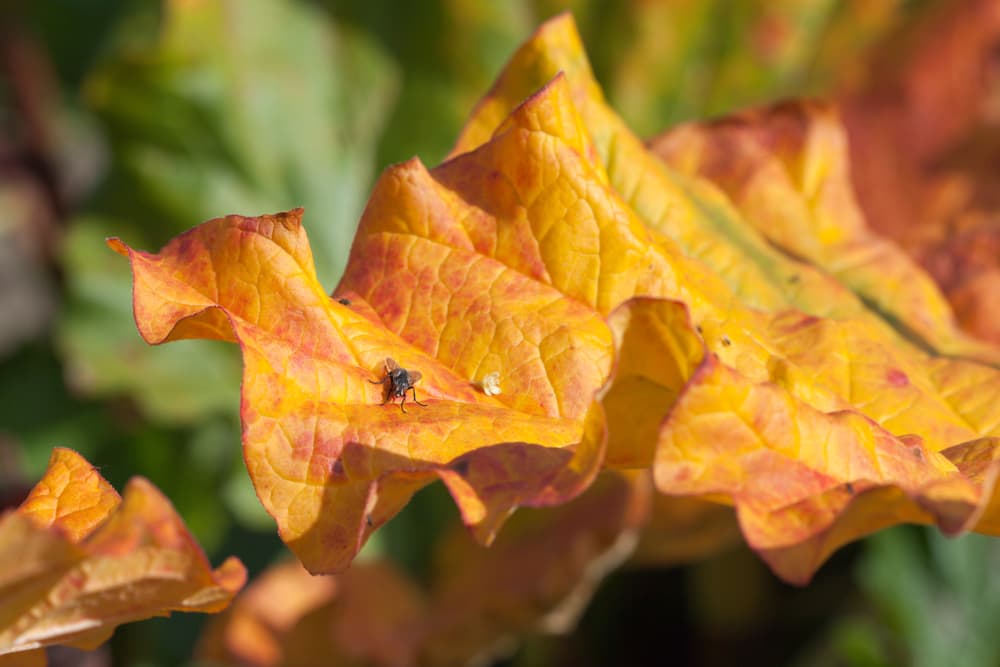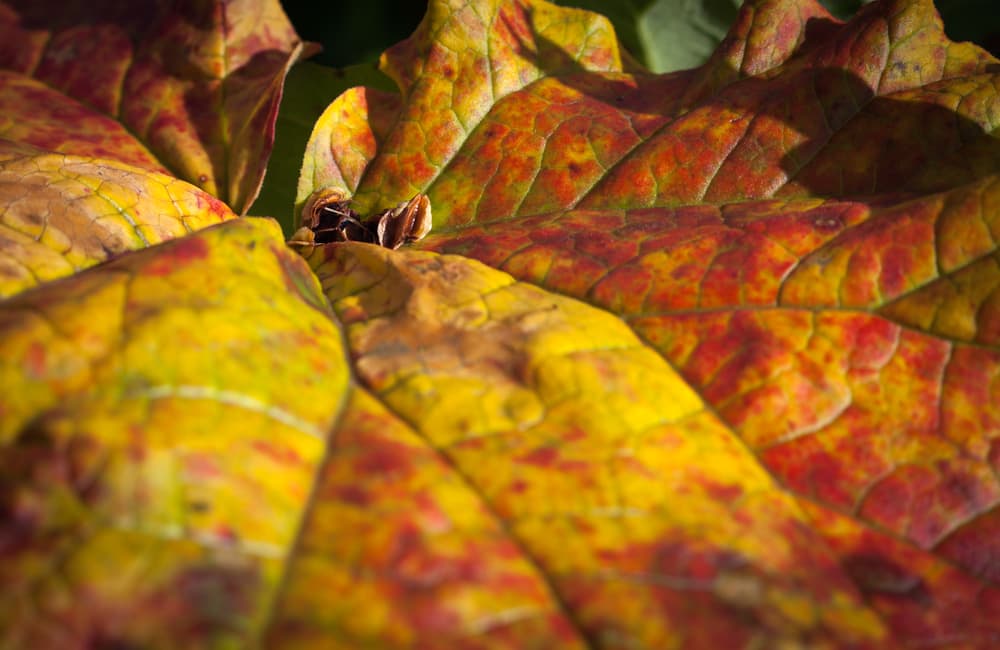‘Get The Balance Right With Rhubarb’ – Dan Ori On Yellowing Leaves And Their Causes

PERENNIALS > RHUBARB > YELLOW-LEAVES

Ed is a horticultural therapist, professional gardener and writer. Ed has a BSc in Occupational Therapy from Coventry University and a Diploma in Social and Therapeutic Horticulture (DipSTH) via Thive, the RHS and Pershore College. Ed runs a community kitchen garden in West Sussex, where he leads horticultural therapy sessions.
Reviewed By DAN ORI

Dan has over 27 years’ under his belt caring for plants and gardens. Working as a Horticultural Instructor and Consultant, he draws on a diverse range of experience that includes working as a Head Gardener, Tree Surgeon, Garden Centre Trouble Shooter, and writer of academic papers. Dan has a Level 3 Diploma in Horticulture and is currently a candidate for the RHS’s most prestigious award – The Master of Horticulture.
IN THIS GUIDE
RHUBARB GUIDES
Companion Plants
Container Growing
Feeding
Forcing
Harvesting
Overwintering
Pruning
Splitting
Thin Stalks
Varieties
Yellow Leaves
Rhubarb is a hardy perennial vegetable that is commonly grown for its delicious and vibrant stems.
However, even though it is generally easy to grow and care for, gardeners can face some challenges when growing it as it is not native to the UK.
One of the most common problems gardeners can experience when growing rhubarb is yellow leaves.
This article will consider the possible causes of why rhubarb leaves turn yellow, what can be done to prevent this and any remedial action that can be taken.
Nutrient Deficiencies
Rhubarb plants are hungry feeders and yellowing leaves can sometimes suggest a lack of nutrients and minerals in the soil necessary for it to thrive.

A thick annual mulch of organic matter or well-rotted manure applied in early spring is highly recommended, especially when growing rhubarb on poor soils, as well as an application of a general-purpose fertiliser.
However, it is important to note that when applying a layer of mulch, you need to be careful not to cover the crown of the plant, as this can lead to crown rot and more serious issues.
Waterlogged Soil
Rhubarb grows best on moist but free-draining soil and will struggle if grown on a compacted site or an area that is prone to waterlogged soil, which can potentially lead to foliage yellowing.
“The trick is to get the balance right with Rhubarb,” says Horticulturist Dan Ori.
“It needs moist soil to crop well but it doesn’t do well in waterlogged soil, as the crown will often rot.”
If your garden has compacted soil, it can be made workable and suitable for growing rhubarb by digging it over and adding organic matter such as homemade compost or well-rotted manure.

It is worth noting that rhubarb can also grow well in a large pot or container as not only can the growing medium be mixed to suit the plant, but it can be moved into the best spot for it to grow.
With regards to the aspect of where to grow rhubarb, it prefers a sheltered and south-facing site that will receive full sun.
Rhubarb can be grown in partial shade, although may struggle if it does not receive enough direct light.
Temperature
Rhubarb is a hardy plant with a rating of H5, indicating that it can withstand winter temperatures down to as low as -10-15°C.

Rhubarb originates from colder climates and actually requires a cold period of temperatures around 0°C for a couple of months in order to produce healthy foliage and stems the following season.
Although low enough winter temperatures are unlikely to be a problem for most parts of the UK, it is worth noting that this may be an issue for much milder and coastal regions.
Watering
Yellowing leaves and wilting can often be an early sign of either over or under-watering rhubarb.
Rhubarb requires moist but not overly wet soil and thorough watering of the roots during hot and dry spells is advised, as underwatering can lead to reduced and even a complete halt of all growth.

However, overwatering can also be harmful as it can lead to crown rot and waterlogged soil.
As a general rule, it is recommended to allow the top 2-4cm of soil to dry out before watering again and to avoid watering if the soil is already damp.
